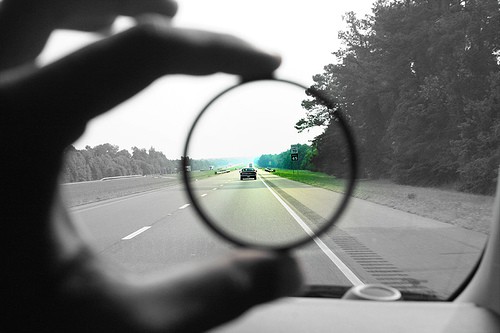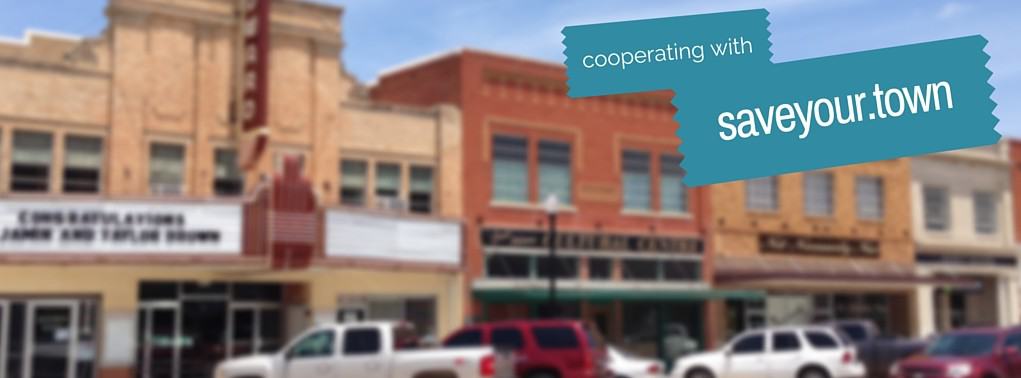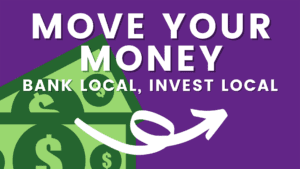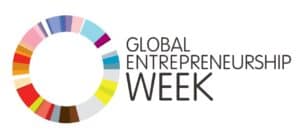
Filters are supposed to make it easier for you to see what you want to see. Most email filters fail on that. Photo (CC) by dctennis.
Gmail users, head to this article: Using Gmail’s Tabbed Inbox wisely.
Outlook users and others, read on…
I manage email a bit differently than many people. I keep my inbox clear, and most of my email automatically sorts itself into easy-to-process groups. That means I spend less time on email every single day.
How filters are wasting your time, and what to do about it
Filters are the key, but most people who use them actually misuse them. Filters are not for finding emails later. Filters are for getting email out of your inbox, out of your way, before you ever see it. Filters put your emails into groups by how you’ll process them: read-only, action-required, etc.
Picture a big pile of paper mail. It’s all mixed up. You can’t tell what’s in there. You have to process it one item at a time, in no particular order.
Now, imagine your assistant comes in and sorts the pile. There are magazines in one box, newsletters in another, bills all together, notes from friends where you can find them, junk mail trashed, letters from clients grouped, and the packet from the boss right on top. Then, your assistant only brings you the items you need right away. You can deal with the work items, savor the personal notes, let the bills wait until bill-paying day, and easily skim through newsletters on your lunch hour.
That’s what I want to do to your inbox. I want you to use filters to sort the email and keep it out of your inbox, out of your way. All the newsletters go in the “To Read” folder. All the items you’re following up on are Starred. Client or co-worker emails are in a folder together.
After a few days of creating good filters, the only things that ever appear in the inbox are important items and a couple of new items to create filters for. That’s it. Everything else is auto-sorted.
Because items are sorted by how you’ll process them, your brain gets the easiest possible course through email. It goes into reading mode, and you sail through the To Read items. You shift to work project mode, and dive into the client folders.
My friend Rob Hatch said this one piece of insight changed everything for his email management. He worked this system into his course Work Like You’re On Vacation.
How do I get started?
If you have a big backlog in the inbox, move it out of your way. Make a new folder, “Old Inbox,” and move all the existing mail into it. (You can deal with it later, 25 items at a time, until it’s gone.) That’s all you need to do the first session. Close your email.
When you next open your inbox, your first focus is NOT reading emails. It is creating filters. Each filter should assign a label (or folder) name, and most importantly Skip The Inbox.
You can filter any way that makes a logical batch for action. Filter by the name of the sender, by key words, or by an entire domain, such as @importantclient.com.
Tip: The first filter you setup can be for the keywords unsubscribe or safeunsubscribe, to skip the inbox, and apply the label To Read.
You might use folders like these to create easy-to-scan batches:
- To Read
- Big Client
- Ads (the ones you like)
Get follow-up items out of the inbox
Any item that needs further action than you can give it now, needs out of the inbox. Put your pending items in one folder or mark them with a star.
When do I unsubscribe?
Most “inbox zero” instructions say to unsubscribe from everything possible as a first step. But I disagree. Once you have an efficient filter system, you can make better decisions about what to keep and what to cut. When you are free to focus on “to read” items in a batch, you’ll be able to pick out the ones that are most informative and worth keeping. So make your filters before you start your unsubscribe campaign.
I actually use To Read for my favorite “must read” items, and To Read Later for lower priority items. I check To Read every day, To Read Later usually once per week.
While you’re unsubscribing, think about which social network notifications you actually want to receive. I have new follower notifications turned off for my main Twitter, because I check it regularly. For my smaller Twitter account, I have notifications on because I don’t monitor it as closely. I do have a filter that puts them all into a separate folder.
I’ll never remember to check folders!
I felt the same way. It took time and practice for me to get used to. I used to star an item to follow up, then forget about it! So I actually created a weekly to-do item to process my starred emails.
I’m confident that if I can learn to check my folders, you can, too. I mean, you learned to check your inbox, didn’t you? Well, you can learn to check folders. Once you feel how easy it is to work in batches, you’ll feel that “reward” sensation, and you’ll want more of it. So you’ll be strengthening the habit.
Until the new habit kicks in, make a daily checklist with times. Schedule yourself to check those folders once a day at 4pm.
What works for you?
Managing email is highly individual. This setup works for me, but you have tricks that work for you. I’d love to hear those in the comments.
Updates:
August, 2013:
Gmail now has a Tabbed Inbox, Priority Inbox, and more choices for prioritizing email. You’ll find my best advice here: Using Gmail’s Tabbed Inbox wisely.
May, 2013:
An app named Mailbox has made a big splash since this came out. However, it’s limited to making it easier for you to do the work that the filters should be doing with zero work. Even if you use a snazzy tool to let you flick and swipe to triage your unsorted inbox, you’re still wasting your time sorting through unrelated items. But you might look cooler doing it.
A potentially more useful tool is SaneBox. It will help you build filters to automatically group emails by type or function for any email system. It is a paid solution, but if you find it fits your filtering style, it may be worth it.
New to SmallBizSurvival.com? Take the Guided Tour. Like what you see? Subscribe.











Your filters will set you free!
This is some very good advice! My email gets out of control at times and I definitely need some solutions. This really helps – thanks!
My Twitter friend Diane Toomey (@d2me) tried this out. Here’s her reaction:
“Well, it’s been 2 days now, & I love it! Managing smaller blocks of emails, esp. by how I process them is a balm to my stress! Best tip of the year (so far!).”
Thanks, Diane!
Thanks to your easy-to-follow and encouraging instructions, Becky, I was able to make MS Outlook 10 work FOR me, instead of feeling bombarded by all the informative subscriptions I usually see first thing in the morning, when I need to get some work done. It’s an amazing psychological advantage also.
So, I set up filters in my Gmail and this morning, I could see that some LinkedIn notifications, for example, had been filed properly in their new folders, but they were also still in my IN box.
I went back into the filter creation box – do I need to check “Skip the In Box – Archive it” as well? Seems like that would put it in both its LinkedIn folder and in the Archive folder.
Thanks for the help!
Sheila, yes, you need to check “Skip the Inbox – Archive it” as well. In this case, “Archive it” means the same as “Skip the Inbox.”
Thanks – by Monday I should be locked in pretty well. Now, as you say, gotta remember to check the other folders. :)
OK, my “Working” folder is set up (and bulging, but hey, progress!) and I’m starting to star the important work-related emails in that folder. It’s actually named “AWorking Folder” to force it to the top of the alphabetical stack, and I gave it a blue Label Color to make it even more prominent.
The IN box is now zero. My God, it looks good. Huzzah!
Since we’ll be seeing each other this week, I’ll give you a mid-week check up. :)
I have tried filters so many times and have been unsuccessful. I do well with the “read later” stuff and it did make realize what I could unsub from. But I still found that critical emails were getting missed. I was spending so much time finding things in folders – or checking to make sure that things weren’t lost – that I wasn’t saving any times.
Any suggestions for those of us who’ve tried and failed at this?
Mary Jo, I’m glad you’re able to filter off the “read later” emails. That’s a good first victory!
I can see how you feel about losing things, and how that would cost you time. I’ve found a couple of things work for me, that might help you, too.
Pretend your inbox is actually called “NEW ARRIVALS.” It’s only where you find the today’s news. I wish you could actually rename it that! I think it might help.
I use stars to replace the, “I’ll keep this in the inbox, where I’ll see it” feeling. I treat my starred folder like you’re treating your inbox now. When I’m looking for an important email, it must be in starred. You could even make a folder called “Inbox 2” where you can keep those things that “need to stay in the inbox.”
Because you work in such an email-intensive business, you’ll have different ways of organizing it. Start watching yourself. What do you look for? What emails are too important to lose, and how do you find them in the inbox now? Do you look by date, by person, by subject? Those are clues to how you can best re-organize them. They key is to have emails organized in a way that makes sense for your thinking. If you always think by person, then organize by person.
But start with making a “second” inbox, and consider your first inbox only New Arrivals. I think that may be your second email victory.
Becky, thanks for helping me to finally control my inbox rather than my inbox controlling me. I use filters but not enough. I hadn’t thought about filtering all my client email to their individual folders (which I already have set up). Also, if any of your readers use the Mail app on their Mac, it allows for ordering folders in a way that makes sense to you, rather than alphabetical. I’ve just moved all my clients and current projects to the top of the folder queue, right under the ACTION folder that holds all the email that was clogging up my inbox. That empty inbox makes me feel so much better!
Donna, thanks for adding your tips! I’m glad email is working better for you now.
One big thing for me was just realizing how much of my email was less urgent than it seemed. Now I answer emails once per week, and it’s amazing when I go back over my inbox, how much of the stuff somehow sorted itself out! Like a customer had a problem that they found a solution to while they were waiting, or something got sorted out by someone else in the team before it got to me…
The stuff that really truly requires me is so much less than I ever imagined and only by progressively “email dieting” would I ever have known this.
Thanks for a great post!
Andrew, you are getting to the heart of this method: allowing the important emails to rise above those that just appear urgent. By not treating every email as equally important, we’re able to focus on the the ones that really matter. And it is amazing how many things sort themselves out, or really just weren’t urgent after all.
Side note: I don’t generally recommend you leave customers hanging for a week to find their own solutions. It depends on your business, of course. If you’re a life coach teaching independence, then it may make a lot of sense!